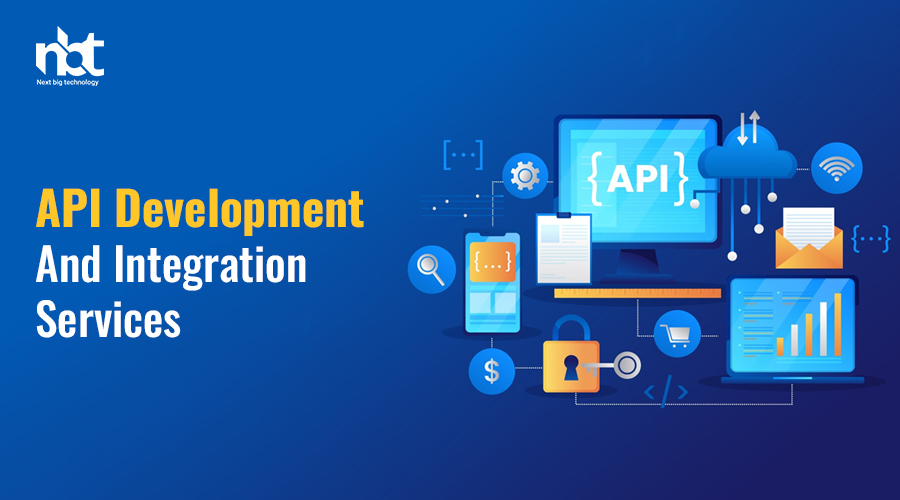Table of Contents
Introduction to APIs
In the digital era, where connectivity and integration reign supreme, Application Programming Interfaces (APIs) serve as the linchpin that enables seamless communication between diverse software applications, systems, and devices. Understanding the concept, functionality, and significance of APIs is pivotal in grasping the underlying infrastructure of today’s interconnected digital world.
Unveiling the Concept of APIs
At its essence, an API (Application Programming Interface) is a set of protocols, tools, and definitions that enables different software applications to communicate and share data with each other. Picture it as a messenger that facilitates the interaction between various programs, allowing them to request and exchange information.
The Role of APIs in Simplifying Interactions
Imagine booking a ride through a ridesharing app, logging into a website using your Google or Facebook credentials, or checking the weather through a smartphone app. In each scenario, APIs are silently at work, facilitating the exchange of information between different systems and delivering the desired outcome seamlessly.
Understanding API Endpoints: Entry Points to Functionality
APIs consist of endpoints, which serve as gateways or URLs that applications use to access specific functionalities or data. These endpoints specify the request format, data parameters, and response structure, essentially acting as the access points to the API’s capabilities.
Types of APIs: Unveiling the Diversity
1. RESTful APIs (Representational State Transfer):
- RESTful APIs are a popular architectural style for designing networked applications. They use standard HTTP methods (GET, POST, PUT, DELETE) to perform operations on resources, making them easily scalable and flexible.
2. SOAP APIs (Simple Object Access Protocol):
- SOAP APIs rely on XML messaging protocols for exchanging information over a network. They provide a more rigid structure compared to REST APIs but offer advanced security features and standardized communication.
3. GraphQL APIs:
- GraphQL APIs allow clients to request specific data by enabling them to specify the structure of the response. This flexible approach to data retrieval has gained popularity due to its efficiency in fetching precisely what is needed.
4. Webhook APIs:
- Webhooks enable real-time communication between applications by triggering events or notifications in response to specific actions, eliminating the need for constant polling.
API Development: Building the Bridge
1. Designing APIs for Specific Purposes:
- Crafting APIs involves designing endpoints and specifying the functionalities they offer. The process entails careful consideration of user needs, security measures, and scalability.
2. Documentation and Standards:
- Well-documented APIs are essential for developers looking to integrate or build upon existing functionalities. Clear documentation outlines endpoints, parameters, and response structures, easing the integration process.
3. Security Measures:
- Security is paramount in API development. Implementing authentication, authorization, and encryption protocols safeguards sensitive data and prevents unauthorized access.
The Significance of API Integration
1. Breaking Down Silos:
- API integration bridges the gap between disparate systems, allowing them to communicate and share data. This interconnectedness enhances operational efficiency and collaboration.
2. Enhancing User Experiences:
- Integrated APIs enable the creation of feature-rich applications by incorporating functionalities from different sources. This enriches user experiences and increases engagement.
Success Stories: APIs Driving Innovation
Case Study 1: Social Media Integration
- Social media platforms offer APIs that enable developers to integrate features such as login authentication, sharing content, or accessing user data. This integration fuels the growth of various applications, fostering a connected digital ecosystem.
Case Study 2: E-commerce Integration
- Online marketplaces thrive on APIs that facilitate payment gateways, inventory management, and order processing. Seamless integration between e-commerce platforms and other systems optimizes operations and improves customer experiences.
Embracing the Future of APIs
The role of APIs in the digital landscape is poised to expand further. As technologies evolve, APIs will continue to drive innovation by enabling the integration of emerging functionalities such as AI, IoT (Internet of Things), and blockchain into existing systems.
API Development Process
APIs (Application Programming Interfaces) serve as the backbone of modern digital interactions, enabling seamless communication between various software applications and systems. Developing a robust API involves a structured process that ensures functionality, security, and scalability. Here’s a detailed walkthrough of the API development process:
1. Ideation and Planning
Defining Objectives and Use Cases
Begin by clearly defining the objectives of the API. Identify the specific functionalities it needs to offer, the data it will handle, and the target audience or applications that will utilize it. Map out the use cases and scenarios to understand how the API will be accessed and utilized.
Feasibility Analysis
Conduct a feasibility analysis to determine the technical viability of the API. Assess the technological requirements, potential challenges, and resources needed for development and deployment.
2. Design and Specification
Choosing the Right Type of API
Decide on the type of API: whether it will be RESTful (Representational State Transfer), SOAP (Simple Object Access Protocol), GraphQL, or other types based on the requirements and compatibility with the systems it will interact with.
Defining Endpoints and Data Structures
Define the endpoints (URLs) that the API will expose for interaction. Design the data structures and formats (JSON, XML, etc.) that will be used for requests and responses.
Documentation
Comprehensive documentation is crucial for developers who will be consuming the API. Document endpoints, parameters, authentication methods, error codes, and usage guidelines clearly and comprehensively.
3. Development
Backend Development
Develop the backend infrastructure and logic required to power the API. This involves writing the code that handles incoming requests, processes data, and generates appropriate responses. Choose the appropriate programming language and framework based on the project requirements.
Security Measures
Implement robust security measures to protect the API from potential vulnerabilities. This includes authentication mechanisms, authorization protocols, encryption of sensitive data, and measures against common security threats like SQL injection or cross-site scripting.
Testing
Thoroughly test the API’s functionalities, endpoints, and responses. Unit tests, integration tests, and endpoint testing should be conducted to ensure reliability, functionality, and adherence to specifications.
4. Deployment and Integration
Selecting Hosting Environment
Choose the appropriate hosting environment for deploying the API. Cloud-based solutions like AWS, Azure, or Google Cloud Platform offer scalability and flexibility, but on-premises hosting might be suitable for certain security-sensitive applications.
Version Control
Implement version control mechanisms to manage updates and changes to the API without disrupting existing functionalities. Versioning ensures backward compatibility and a smooth transition for consumers using older versions.
Monitoring and Analytics Integration
Integrate monitoring tools and analytics to track API usage, performance metrics, and identify potential bottlenecks or issues. Monitoring helps in maintaining uptime, optimizing performance, and identifying areas for improvement.
5. Release and Maintenance
Release Strategy
Roll out the API release strategically. Communicate updates, changes, and new features effectively to API consumers. Offer support and resources for developers integrating or troubleshooting the API.
Continuous Improvement
API development is an iterative process. Collect feedback from developers and users to identify areas for improvement. Continuously update and enhance the API based on evolving requirements and technological advancements.
Bug Fixes and Patch Updates
Regularly monitor for bugs and security vulnerabilities. Provide prompt bug fixes and patches to ensure the API’s reliability and security.
Key Components of API Integration
In the digital ecosystem, the seamless interaction between different software applications is made possible through API integration. As businesses strive for interconnectedness and streamlined operations, understanding the core components of API integration becomes essential.
1. API (Application Programming Interface)
At the heart of integration lies the API itself. APIs serve as the intermediaries that enable communication between diverse software applications, allowing them to request and share data seamlessly. Whether it’s a RESTful API, SOAP API, GraphQL, or other protocols, APIs provide the necessary rules and standards for interaction.
2. Endpoints and Methods
Endpoints are specific URLs or URIs exposed by an API that dictate where and how the API should be accessed. Each endpoint represents a distinct function or resource that can be accessed. Methods, on the other hand, determine the actions that can be performed on these endpoints—common methods include GET (retrieve data), POST (submit data), PUT (update data), DELETE (remove data), etc.
3. Authentication and Security
Security is paramount in API integration. Authentication mechanisms like API keys, OAuth tokens, or other forms of authentication ensure that only authorized users or systems can access the API. Implementing encryption, SSL/TLS protocols, and adhering to best security practices are crucial for safeguarding data during transmission.
4. Data Formats (Request and Response)
APIs handle data in various formats, such as JSON (JavaScript Object Notation), XML (Extensible Markup Language), or sometimes even CSV (Comma-Separated Values). Understanding the data formats required by the API for requests and the format in which it responds is essential for successful integration.
5. Rate Limiting and Throttling
To prevent abuse or overload on the API servers, rate limiting and throttling are implemented. Rate limiting sets a cap on the number of API requests allowed within a specified timeframe, while throttling controls the speed at which requests are processed. Managing these limits ensures optimal performance without overwhelming the system.
6. Error Handling
Error handling mechanisms are critical in API integration. APIs can encounter various types of errors, including server errors, client-side errors, authentication failures, etc. Implementing robust error handling ensures graceful handling of errors, providing informative responses to users or systems interacting with the API.
7. Documentation and Versioning
Comprehensive documentation is the backbone of successful API integration. Detailed documentation provides information on endpoints, methods, parameters, authentication methods, sample requests, and responses, easing the integration process. Additionally, versioning allows for updates and changes to the API without disrupting existing integrations.
8. Testing and Monitoring
Thorough testing of APIs before integration ensures compatibility and functionality. Post-integration, continuous monitoring of API performance, response times, error rates, and other metrics is vital. Monitoring tools and analytics help identify issues promptly, ensuring optimal performance and user satisfaction.
9. Integration Patterns and Architectural Considerations
Choosing the right integration pattern—such as point-to-point, hub-and-spoke, or publish-subscribe—depends on the specific needs and complexities of the integration. Architectural considerations, including scalability, maintainability, and extensibility, play a pivotal role in designing a robust integration architecture.
10. Workflow and Business Logic
Understanding the workflow and business logic involved in the integration process is essential. Mapping out how data flows between systems, defining triggers and actions, and aligning the integration with business objectives ensures that the integration serves its intended purpose effectively.
Best Practices in API Development
In the realm of modern software development, Application Programming Interfaces (APIs) stand tall as the bedrock of connectivity and interoperability. Crafting robust APIs involves more than mere coding; it requires adherence to best practices that ensure functionality, security, scalability, and seamless integration. Let’s delve into the core principles and practices that define exemplary API development.
1. Design-First Approach
Adopting a design-first approach means envisioning the API’s structure, endpoints, and data models before delving into implementation. Tools like OpenAPI or Swagger facilitate creating clear and comprehensive API specifications, ensuring alignment with business needs and usability.
2. Consistency and Simplicity
Strive for consistency in naming conventions, endpoints, response structures, and error handling. A simple and intuitive API design reduces complexity, making it easier for developers to understand, implement, and maintain.
3. RESTful Principles
REST (Representational State Transfer) remains a widely embraced architectural style for APIs due to its simplicity and scalability. Adherence to RESTful principles, such as statelessness, uniform interfaces, and resource-based endpoints, enhances API predictability and ease of use.
4. Versioning and Compatibility
Implement versioning to ensure backward compatibility. Changes to an API should not disrupt existing functionalities for users who rely on earlier versions. Semantic versioning schemes like “Major.Minor.Patch” aid in clearly communicating changes without confusion.
5. Security Measures
Security is paramount in API development. Implement robust authentication and authorization mechanisms, such as OAuth 2.0, API keys, or tokens, to safeguard sensitive data. Employ SSL/TLS encryption for data transmission, and consider rate limiting to prevent abuse.
6. Documentation and Developer Experience
Comprehensive and accessible documentation is the cornerstone of a successful API. Provide clear, concise, and up-to-date documentation, including usage examples and code snippets. Developer-friendly APIs ease adoption and integration, fostering a positive developer experience.
7. Testing and Quality Assurance
Thorough testing is indispensable. Conduct unit tests, integration tests, and end-to-end tests to validate functionality, catch potential issues early, and ensure robustness. Continuous integration and deployment pipelines streamline the testing process.
8. Performance Optimization
Optimize API performance by minimizing response times and reducing unnecessary data transfers. Techniques like caching, pagination, and compression can significantly enhance API responsiveness and scalability.
9. Monitoring and Analytics
Implement monitoring tools to track API performance, usage patterns, and error rates in real time. Analytics provide valuable insights into user behavior, allowing for proactive improvements and optimizations.
10. Lifecycle Management
Adopt a structured approach to API lifecycle management, encompassing stages from planning and design to retirement. Regularly update APIs, deprecate outdated versions, and communicate changes effectively to users.
11. Community Engagement and Feedback
Encourage community engagement by fostering developer forums, feedback channels, and support mechanisms. Actively listening to user feedback and addressing concerns cultivates a collaborative ecosystem and drives continuous improvement.
12. Scalability and Future-Proofing
Design APIs with scalability in mind. Anticipate future requirements and evolving technology standards to ensure the API remains adaptable and future-proof, accommodating growth without major disruptions.
Tools and Technologies for API Development
In the realm of Application Programming Interfaces (APIs), a multitude of tools and technologies play pivotal roles in shaping and optimizing the development process. These tools not only streamline the creation of APIs but also contribute significantly to their efficiency, security, and scalability.
1. API Design Tools
Swagger (OpenAPI):
Swagger provides a suite of tools for designing, building, and documenting APIs conforming to the OpenAPI Specification. It simplifies the API design process by allowing developers to visualize and interact with API resources before implementation.
RAML (RESTful API Modeling Language):
RAML is a concise language that allows developers to define the structure of an API. It aids in creating comprehensive API documentation and facilitates easier collaboration among teams.
Postman:
A popular API development platform, Postman offers functionalities for designing, testing, and debugging APIs. It simplifies the process of sending requests, examining responses, and sharing API documentation.
2. API Development Frameworks
Express.js (Node.js):
Express.js is a robust and flexible framework for building APIs using Node.js. It simplifies routing, middleware implementation, and handling HTTP requests, making API development in JavaScript seamless.
Flask (Python):
Flask is a lightweight framework in Python that provides the necessary tools to build APIs efficiently. Its simplicity and extensibility make it an ideal choice for developing RESTful APIs.
Django REST framework (Python):
For more comprehensive applications, Django REST framework offers a powerful toolkit for building APIs in Python. It provides authentication, serialization, and validation features out of the box.
3. API Testing Tools
Postman:
Apart from its design capabilities, Postman also excels in API testing. Its intuitive interface allows developers to create and run automated tests, monitor responses, and analyze performance.
SoapUI:
Primarily focused on testing SOAP and REST APIs, SoapUI offers a user-friendly interface for functional, security, and load testing. It aids in identifying bugs and performance issues early in the development cycle.
Jest (for JavaScript):
Jest is a JavaScript testing framework that provides a simple yet powerful testing experience. It’s particularly useful for testing APIs built using Node.js and React.
4. API Documentation Tools
Swagger UI:
Swagger UI automatically generates interactive API documentation from OpenAPI (formerly Swagger) specifications. It provides a user-friendly interface for developers and consumers to explore and understand API endpoints.
Apiary:
Apiary streamlines the process of creating API documentation by allowing developers to design, prototype, document, and test APIs in a collaborative environment.
Redoc:
Redoc offers a clean and customizable documentation interface for APIs. It converts OpenAPI specifications into visually appealing documentation, enhancing readability and accessibility.
5. Security and Monitoring Tools
Auth0:
Auth0 provides a robust identity and access management platform, offering authentication and authorization solutions for APIs. It ensures secure access control and user authentication.
Apigee:
Apigee, now part of Google Cloud, offers an API management platform that includes security, analytics, and monitoring features. It helps in ensuring API security and performance.
AWS CloudWatch:
For APIs hosted on Amazon Web Services (AWS), CloudWatch offers monitoring and logging capabilities. It allows developers to track API performance, detect issues, and set up alerts.
6. API Deployment and Hosting Tools
Amazon API Gateway:
Amazon API Gateway simplifies the process of creating, deploying, and managing APIs on AWS. It allows seamless integration with other AWS services and supports various API deployment strategies.
Heroku:
Heroku offers a platform-as-a-service (PaaS) solution for deploying and hosting applications, including APIs. It supports multiple programming languages and frameworks, making deployment straightforward.
Microsoft Azure API Management:
Azure API Management is a comprehensive solution for publishing, securing, and monitoring APIs hosted on Microsoft Azure. It provides scalability and robust management features.
Future Trends in API Development
In the ever-evolving landscape of technology, Application Programming Interfaces (APIs) stand as the linchpin of connectivity, bridging diverse applications, services, and devices. As we move forward into a more interconnected world, several trends are reshaping the landscape of API development, promising groundbreaking changes and opportunities for businesses and developers alike.
1. GraphQL Revolutionizing API Queries
GraphQL, an alternative to traditional REST APIs, is gaining momentum. It offers more flexibility and efficiency by allowing clients to request only the specific data they need, reducing the payload size and optimizing network performance. The demand for GraphQL APIs is set to rise as developers seek more streamlined and tailored data retrieval processes.
2. Event-Driven Architectures: Asynchronous Communication
Moving beyond request-response models, event-driven architectures are becoming prevalent. These architectures allow systems to communicate asynchronously through events, enabling real-time updates, better scalability, and improved responsiveness. Event-driven APIs facilitate seamless integration and enhanced user experiences.
3. API Security: Focus on Protection and Standards
With the growing threat landscape, API security remains paramount. Future API development trends emphasize stringent security measures, including OAuth standards, OpenID Connect, and more advanced encryption protocols. Implementing robust security measures within APIs is crucial to safeguard sensitive data and prevent cyber threats.
4. AI and Machine Learning-Powered APIs
The integration of Artificial Intelligence (AI) and Machine Learning (ML) into APIs is on the rise. AI-powered APIs provide intelligent functionalities, enabling predictive analytics, natural language processing, image recognition, and personalized recommendations. Such APIs are set to revolutionize industries, offering innovative solutions and enhancing user experiences.
5. APIs for IoT and Edge Computing
As the Internet of Things (IoT) and Edge Computing continue to expand, the demand for APIs catering to these domains is burgeoning. APIs designed for IoT devices and edge computing systems facilitate seamless communication between devices, enabling data exchange and control over interconnected networks.
6. Low-Code/No-Code Platforms: Democratizing Development
The emergence of low-code/no-code platforms is transforming the landscape of API development. These platforms empower citizen developers and businesses with limited coding expertise to create APIs without delving deep into intricate programming. This democratization of development accelerates innovation and reduces time-to-market for new APIs.
7. Hyper-Personalization and Contextual APIs
The future of APIs lies in hyper-personalization and contextual relevance. APIs that adapt to user behavior, preferences, and context will become mainstream. By leveraging data analytics and user insights, contextual APIs offer tailored experiences, predicting and fulfilling user needs before they even articulate them.
8. Decentralized and Blockchain-based APIs
Blockchain technology is revolutionizing various industries, and APIs are no exception. Decentralized APIs (dAPIs) based on blockchain provide enhanced security, transparency, and immutability. These APIs facilitate secure transactions, smart contracts, and decentralized applications (dApps), opening new avenues for innovation.
9. API Governance and Lifecycle Management
Efficient governance and lifecycle management are critical for the success of APIs. Future trends focus on comprehensive API governance frameworks, ensuring compliance, monitoring performance, version control, and managing the entire lifecycle of APIs seamlessly.
10. Serverless Architectures: The Rise of Functions-as-a-Service (FaaS)
Serverless computing and Functions-as-a-Service (FaaS) are reshaping API development. Serverless architectures enable developers to focus solely on writing functions, reducing infrastructure management overhead. This trend fosters agility, scalability, and cost-effectiveness in API deployment.
Embracing the Future of APIs
The future of API development is dynamic, promising an array of innovations and transformative capabilities. As businesses adapt to changing market demands, embracing these emerging trends in API development becomes imperative. By staying abreast of these advancements, developers and organizations can harness the power of APIs to drive innovation, enhance user experiences, and unlock new realms of possibilities.
Case Studies and Success Stories
In the interconnected digital ecosystem, the prowess of API development and integration services is reshaping industries, fostering seamless connections between disparate systems, and propelling businesses towards unparalleled growth.
Case Study 1: E-commerce Revolution
An e-commerce giant sought to enhance its operational efficiency and customer experience. Leveraging API development, they built a comprehensive system that seamlessly integrated multiple functionalities. The integration of payment gateways, inventory management systems, and CRM platforms allowed for real-time updates, ensuring accurate product availability and streamlined transactions. The result? A surge in customer satisfaction, reduced checkout times, and an exponential increase in sales.
Case Study 2: Healthcare Innovations
In the healthcare sector, a hospital network faced challenges in managing patient records across various departments. By implementing integration services, they connected disparate systems to create a unified platform for patient data. This enabled medical professionals to access comprehensive patient information promptly, leading to faster diagnoses, more efficient treatments, and ultimately, improved patient care. The integration also facilitated seamless communication between laboratories, clinics, and administrative departments, significantly reducing errors and enhancing overall operational efficiency.
Case Study 3: Banking and Financial Services
A leading financial institution aimed to provide a seamless banking experience across multiple channels. Through API development and integration services, they created a robust ecosystem connecting their banking systems with mobile apps, ATMs, and online portals. Customers could now perform transactions, check balances, and access services seamlessly across various platforms. This integration not only enhanced user experience but also allowed the institution to gather valuable insights into customer behavior, enabling them to offer personalized services and targeted product recommendations.
Case Study 4: Travel Industry Disruption
A travel booking platform revolutionized its services by integrating with various travel and accommodation APIs. This integration provided users with a one-stop-shop experience, allowing them to compare prices, book flights, accommodations, and car rentals—all within the platform. The seamless integration resulted in increased user engagement, higher booking rates, and improved customer retention.
Case Study 5: Education Technology Advancements
In the education sector, a learning management system provider leveraged API development to create a more interactive and comprehensive platform. By integrating with content providers, assessment tools, and student information systems, they crafted an ecosystem that offered educators and students access to diverse educational resources, personalized learning paths, and real-time performance analytics. This integration transformed traditional learning methods, enhancing engagement and learning outcomes.
Case Study 6: Manufacturing Efficiency Boost
A manufacturing company sought to optimize its supply chain and production processes. Through API development and integration, they connected their inventory management systems with suppliers and distributors. This integration enabled real-time inventory tracking, automated procurement processes, and improved demand forecasting. As a result, the company reduced inventory holding costs, minimized stockouts, and streamlined the entire supply chain, leading to significant cost savings and increased operational efficiency.










